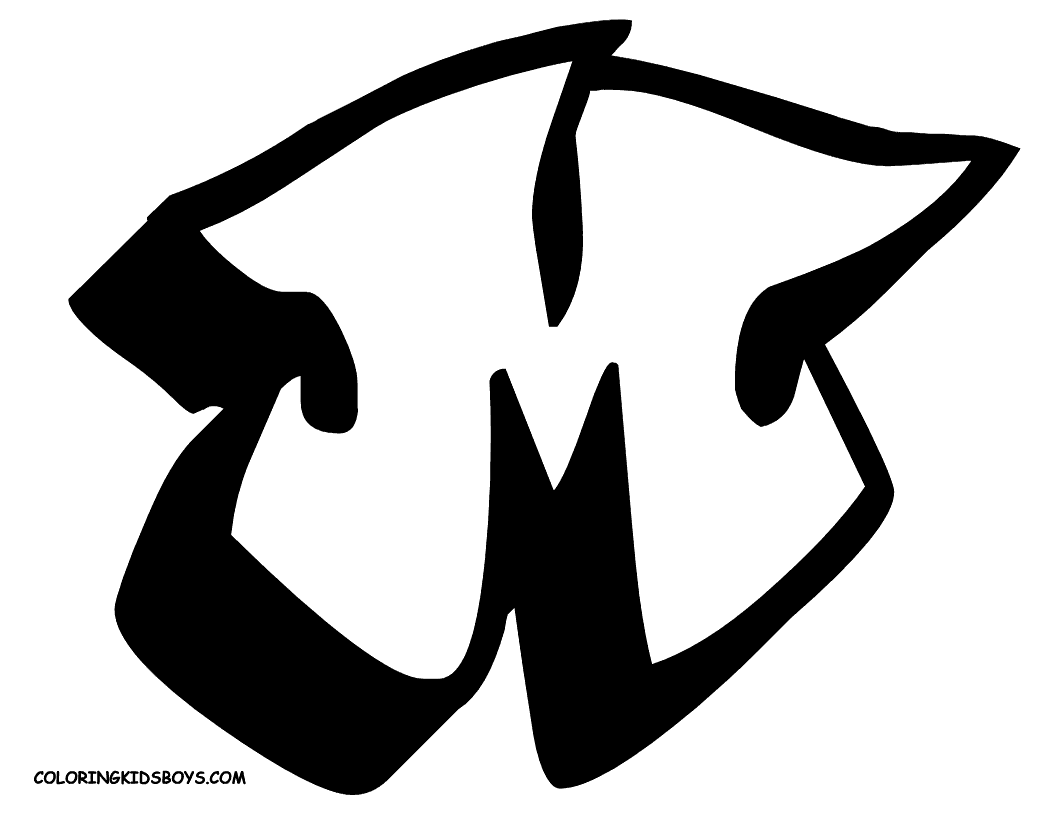

We gonna start off with skinny cap, nice blocky, squared off both sides of the outer parts of the M, drop right back in and sketch in the center. So we'll do a top and we'll work our way around, same thing as always, your 3D and your fill. Still you want to tackle most of that letters as quick as you can. It's a little more complex with M, so you're not gonna get that non-stop line that you want. Let's start off with the throw-up, also known as the bubble letter. I've been painting since a teenager, and I've been doing it for 20 years now.
#Graffiti m professional
But its significance for many people remains in the barrios (neighborhoods), reiterating the importance of accessibility and inclusion in relation to their identity and community in their artwork."My name is Paes164 and I'm a professional artist. Nowadays, graffiti is commonly recognized as a form of public art, embraced by museums, art critics, and art institutions. Similar to other forms of art within, graffiti has become another tool of resistance, reclamation, and empowerment to make the artist own space for expression and popular education. On the other hand, artists also used graffiti as a tool, to express their political opinions, (indigenous) heritage, cultural and religious imagery, and counter-narratives to dominant portrayals of life in the barrios. From here, although graffiti remains the major form of street art with other mediums have evolved - including stenciling, stickers, and wheatpasting. Graffiti in its origins was used to publicly display the artistic expressions in response to the lack of access to museums and art institutions, and the continuous strife, discrimination, and struggle of living in the city.īecause graffiti is illegal in most cases, this form of art has flourished in the underground, requiring little money and providing an opportunity to voice what is often excluded from dominant histories and media. Graffiti as a form of artistic expression, often associated with subcultures as the rebel against authority. Works by Banksy have been sold for over £100,000. The Frenchman Blek le Rat and the British artist Banksy have achieved international fame by producing complex works with stencils, often making political or humorous points. Jean-Michel Basquiat began spraying on the street in the 1970s before becoming a respected artist in the '80s. The debate over whether graffiti is art or vandalism is still going on.įor decades graffiti has been a springboard to international fame for a few. By the 1980s it became much harder to write on subway trains without being caught, many established graffiti artists began using roofs of buildings or canvases. Art galleries in New York began buying graffiti in the early seventies.īut at the same time that it began to be regarded as an art form, the mayor of New York declared the first war on graffiti. The term 'graffiti' was first used by The New York Times and the novelist Norman Mailer.


In the early days, the taggers were part of street gangs who were concerned with marking their territory. In the mid seventies it was hard to see out of a subway car window, because the trains were completely covered in spray paintings known as throw ups, letters, masterpieces. The new art form took off in the 1970s, when people began writing their names, or tags, on buildings all over the city. He enjoyed it so much that he continued to tag Philadelphia with his name.īy the late sixties graffiti reached New York. The story tells that Cornbread felt in love with a girl named Cynthia Custuss and started to write Cornbread Loves Cynthia to get her attention. Darryl McCray (' Cornbread' ) is widely regarded as the father of modern day graffiti. Modern graffiti appeared in Philadelphia in the early 1960s. Later the Ancient Romans and Greeks wrote their names and protest poems on buildings.

The first drawings on walls appeared in caves thousands of years ago. The history of graffiti goes back to ancient times.


 0 kommentar(er)
0 kommentar(er)
